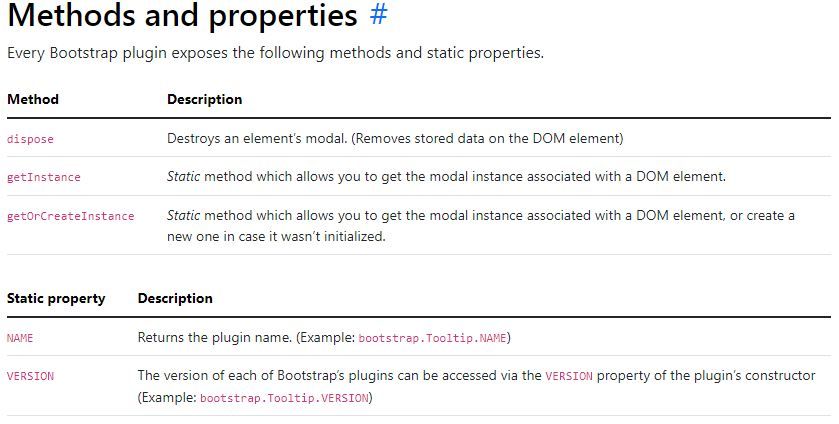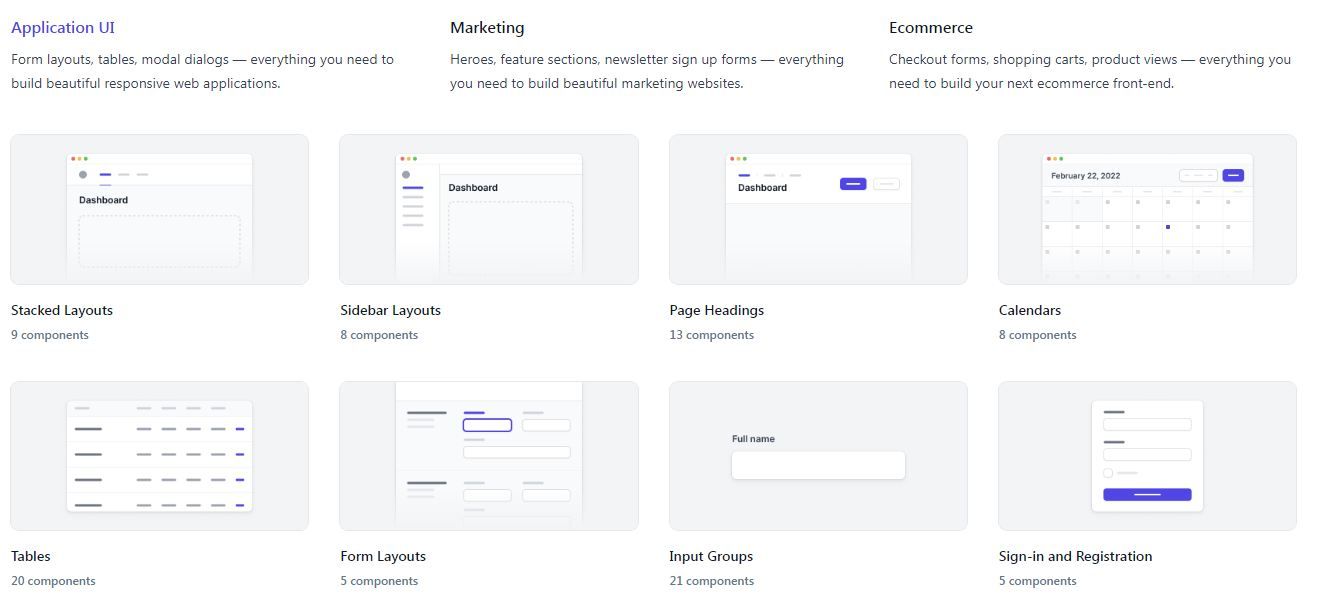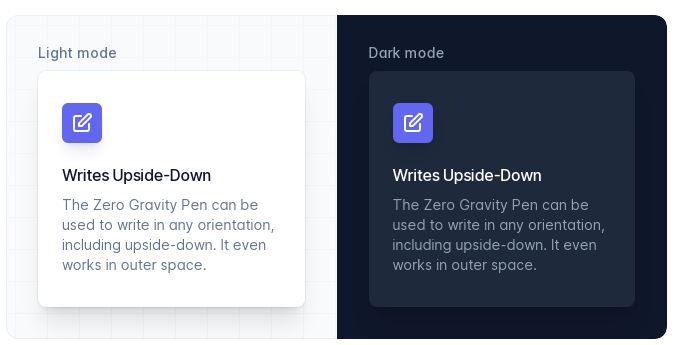Bootstrap vs. Tailwind CSS: Making the Right Choice for Your Next Project
In the web development path, the primary thing you should keep in mind is choosing the appropriate CSS framework. The correct CSS framework can make all the difference in your project In today’s market, if you search for the best CSS framework, you’ll find Bootstrap and Tailwind CSS as the leading contenders.
Even though both are high-scaling and effective ways of incorporating the CSS framework, anyone will only suit your project. Thus, to help you choose your appropriate web developer, we have provided this article with a comparative study of both.
Comparision of the Features of Bootstrap and Tailwind CSS in Nutshell:

Bootstrap: The Time-Tested Giant

Bootstrap is a famous front-end CSS framework designed to streamline internet improvement and create responsive, visually attractive websites. Developed by means of Twitter, it gives a sturdy set of pre-designed components, a responsive grid system, and colossal documentation, making it best for speedy prototyping and keeping consistency throughout projects.
Bootstrap's simplicity lies in its class-based approach, permitting builders to observe predefined instructions to factors for immediate styling except for customized CSS. Although it simplifies the improvement process, it might also result in bloated HTML code. Bootstrap's vast adoption and energetic neighborhood make particular convenient get entry to to support, making it a dependable preference for more than a few internet improvement projects.
GitHub Ranking
We all know valuable GitHub rankings are. Here is the ranking of Bootstrap:
- Stars- 165K
- Watching- 6.8K
- Fork- 78.8K
- Used by- 4.8M
- Contributors- 1,369
Statistics
55% of builders choose Bootstrap as their go-to CSS framework for net improvement (Source: StackOverflow Developer Survey 2021).
Over 20 million web sites use Bootstrap, making it one of the most extensively used CSS frameworks on the net (Source: BuiltWith).
Features
Some of the key elements of Bootstrap include:
Responsive Grid System:
Bootstrap's grid machine lets in builders to create responsive layouts that adapt to quite a number display sizes and devices. It makes use of a 12-column grid, making it handy to create multi-column designs that reorganize primarily based on the display screen width.

Pre-designed Components:
Bootstrap affords a plethora of pre-styled and reusable UI aspects like buttons, forms, modals, navbars, carousels, and more. These aspects shop time and effort at some point of improvement and make sure a constant appear and sense throughout the website.
Responsive Utilities:
Bootstrap consists of a set of utility lessons that allow builders to manipulate the visibility, alignment, spacing, and different patterns for distinct display screen sizes. This ensures that factors are accurately displayed on a number devices.
Extensive Documentation:
Bootstrap affords complete and well-organized documentation, making it effortless for builders to discover information, analyze the framework, and troubleshoot issues.
Customizable Styles:
While Bootstrap comes with default styles, builders can without problems personalize the look of elements the usage of Sass variables or CSS overrides. This approves for a sure degree of branding and specialty in designs.
JavaScript Plugins:
Bootstrap comes bundled with a series of JavaScript plugins, such as modal dialogs, dropdowns, tooltips, and more. These beautify the performance of the elements and make it handy to add interactive factors to the website.

Browser Compatibility:
Bootstrap is designed to work properly with present day browsers and has swish degradation for older versions, making sure a steady ride throughout distinctive browser environments.
Community and Support:
Being an immensely famous framework, Bootstrap has a giant and energetic neighborhood of developers. This skill you can discover tutorials, code snippets, and aid effortlessly when dealing with challenges for the duration of development.
Fast Prototyping:
Thanks to its pre-designed aspects and ease of use, Bootstrap is top notch for shortly prototyping web sites and net applications, permitting builders to iterate and validate thoughts faster.
Mobile-First Approach:
Bootstrap follows a mobile-first approach, which means it prioritizes cellular devices' sketch and functionality, making sure a easy journey on smaller monitors and progressively enhances it for large screens.
Advantages of Bootstrap
All the listed below points are advantages of Bootstrap:
Pre-designed components:
Bootstrap presents a plethora of ready-to-use components, making it convenient to create consistent, visually attractive interfaces quickly.
Responsive grid system:
Its effective grid device allows builders to construct responsive layouts for a number of display sizes.
Strong neighborhood and resources:
Bootstrap's large neighborhood affords great resources, templates, and third-party extensions.
Tailwind CSS: The Utility-First Champion

Tailwind CSS is a utility-first CSS framework recognised for its effectivity and flexibility. It offers an giant series of utility instructions that allow builders to layout web sites hastily and exactly barring writing customized CSS. With a mobile-first approach, it ensures seamless responsiveness throughout a variety of devices. Tailwind's customizable and themeable nature permits for handy adaptation to branding requirements.
It promotes innovative freedom, empowering builders to craft special designs from the floor up. Tailwind CSS optimizes the improvement technique and provides a lightweight, high-performance output via getting rid of the want for predefined components. Its energetic neighborhood and integration selections similarly beautify its reputation amongst internet developers.
Statistics:
Tailwind CSS has considered an fantastic 350% make bigger in GitHub stars over the previous two years, indicating its fast adoption and developing reputation (Source: GitHub Stars).
Companies like Mozilla, Atlassian, and Shopify have adopted Tailwind CSS for their net improvement projects, reflecting its enchantment to distinguished agencies (Source: Tailwind CSS Official Website)
GitHub Ranking
We all know valuable GitHub rankings are. Here is the ranking of Tailwind CSS:
- Stars- 70.9K
- Watching- 597
- Fork- 3.7K
- Used by- 5.8M
- Contributors- 273
Features
Here, are the important features of Tailwind CSS:
Utility-First Approach:
Tailwind CSS is constructed round utility classes, which are small, single-purpose CSS lessons that follow precise styles. This method offers builders granular manage over plan factors and permits for speedy improvement except writing customized CSS.
Comprehensive Utility Set:
Tailwind CSS provides an giant set of utility instructions protecting more than a few sketch properties, along with colors, typography, spacing, flexbox, grid layout, and more. This complete set reduces the want for writing customized CSS and continues the HTML markup concise.

Responsive Design:
With responsive utility classes, builders can without problems create layouts that adapt to one of a kind display sizes and devices. Tailwind CSS makes it easy to construct responsive designs besides the want for media queries.
Customization and Theming:
Tailwind CSS is enormously customizable. Developers can configure the framework the usage of a configuration file to exchange default colors, fonts, spacing, and different patterns to in shape their branding or graph preferences.
Flexibility and Creativity:
Unlike regular CSS frameworks with predefined components, Tailwind CSS permits builders to format special and innovative interfaces from scratch. It empowers builders to create revolutionary designs barring being restrained with the aid of pre-made components.
Responsive Typography:
Tailwind CSS provides a responsive typography system, making it handy to set font sizes, font weights, and different typographic patterns that alter based totally on the display screen size.
Dark Mode Support:
Tailwind CSS has built-in assist for growing darkish mode variations of websites. It simplifies the method of including darkish mode patterns to your design.

Extractable Utility Classes:
Tailwind CSS utilities are designed to be effortlessly extracted and reused. This potential you can construct your customized graph gadget the usage of Tailwind's utilities and keep consistency throughout projects.
PurgeCSS Integration:
Tailwind CSS can be configured to eliminate unused CSS training from the closing manufacturing construct the use of PurgeCSS, ensuing in smaller file sizes and extended performance.
Active Community and Ecosystem:
Tailwind CSS has a thriving community, and many builders have created plugins, themes, and extensions that similarly beautify the framework's capabilities.
Choosing the Right Framework for Your Project
Learn why is it important for you to choose the appropriate framework for your project and it's success.
Project Requirements:
Evaluate the unique wishes of your project. Does it require pre-designed aspects and fast development, or does it demand a extraordinarily personalized and special diagram approach?

Familiarity and Expertise:
Consider your team's familiarity and know-how with the framework. If your crew is already trained in a specific framework, it may be extra environment friendly to stick with it.
Documentation and Support:
Check the availability and first-class of documentation and neighborhood assist for the framework. A sturdy neighborhood can grant treasured sources and assist troubleshoot issues.

Flexibility and Customization:
Assess the degree of flexibility and customization selections the framework offers. Some initiatives can also require whole innovative freedom, whilst others may additionally advantage from a extra structured approach.
Performance and Efficiency:
Evaluate the framework's overall performance and how it influences your project's load times. Opt for a light-weight framework that would not add needless overhead.
Scalability:
Consider whether or not the framework can scale with your venture as it grows. Ensure it can accommodate future enhancements and changes.
Responsive Design:
If responsiveness is crucial, pick out a framework that offers easy-to-use equipment for constructing responsive layouts throughout a variety of devices.
Compatibility:
Ensure the framework is well matched with the browsers and gadgets your task targets, fending off any possible compatibility issues.
Community Adoption:
A broadly adopted framework typically suggests steadiness and reliability. Check its recognition and usage statistics.

Learning Curve:
Assess the gaining knowledge of curve of the framework, thinking about the time and effort required for your crew to end up proficient.
FAQs
#1 Is Tailwind higher than Bootstrap?
The superiority of Tailwind over Bootstrap relies upon on the project's needs: Tailwind affords unmatched customization and innovative freedom, whilst Bootstrap excels in fast prototyping and pre-designed components.
#2 Which is easier, Tailwind or Bootstrap?
Tailwind CSS is less difficult for builders acquainted with utility-first methodologies, whilst Bootstrap may also be greater available for those accustomed to pre-designed components.
#3 Is Tailwind CSS useful in 2023?
In 2023, Tailwind CSS stays a useful desire with its utility-first approach, customization options, and responsive graph capabilities
Conclusion
In conclusion, the desire between Bootstrap and Tailwind CSS relies upon on your project's particular desires and your improvement team's preferences. Bootstrap excels in imparting pre-designed elements and a familiar, easy-to-use approach, making it best for rapid prototyping and constant designs.
On the different hand, Tailwind CSS stands out for its utility-first philosophy, offering unparalleled customization and creativity for builders looking for unique, visually attractive websites. Tailwind CSS needs a steeper studying curve however rewards with efficient, light-weight designs.
Ultimately, choosing the proper framework requires cautious consideration of mission requirements, group expertise, and favored degree of flexibility. Both frameworks are effective tools; selecting accurately ensures the success of your subsequent project.
How much is a great User Experience worth to you?
Browsee helps you understand your user's behaviour on your site. It's the next best thing to talking to them.


